calsfoundation@cals.org
Harding University
Harding University, a private Christian university associated with the Churches of Christ, is located in Searcy (White County), occupying some 200 acres just east of the center of the city. It is the largest private educational institution in Arkansas. The motto of Harding University is “Developing Christian Servants.”
The school was founded in Morrilton (Conway County). In April 1924, the boards of two struggling Christian junior colleges, Arkansas Christian College of Morrilton and Harper College of Harper, Kansas, agreed to combine their assets and create a single four-year institution. Adlai S. Croom was president and founder of Arkansas Christian College (1922), which had a faculty of ten, while John N. Armstrong was president of Harper College with a faculty of seventeen. The two junior colleges finished the spring 1924 graduation, and then Harper College students and faculty moved to Morrilton in time to unite for the fall semester.
The new Harding College was named in honor of the late pioneer preacher and educator James A. Harding. Armstrong was chosen to be president of Harding College, with Croom as vice president. Harding College began officially on September 23, 1924, occupying Arkansas Christian’s forty-acre campus just north of Morrilton. The college had twenty-six faculty and 284 students from seventeen states. Only seventy-five students were college level; the rest were in the academy elementary and high school.
That first twelve-week fall term cost students $25 tuition plus $7.50 a month room rent and $15 board. Total yearly expenses were under $300, and still many students worked or received scholarships in order to attend. The college had as yet no dormitories. Young men roomed in town, and young ladies lived in a converted hospital building. Classes were held Tuesday through Saturday so that young men who were preaching to support themselves could return to campus on Sunday and have a day to study.
State accreditation was achieved in 1928. The student body increased to 430 in 1933, from twenty-five states, Canada, and Mexico. In spite of all the success and growth, the young college faced increasing financial woes. Not enough money was coming in to meet the demands of growth and building maintenance. This shortage was coupled with the ongoing Depression. Regardless, in 1934, the Harding board bought the defunct Methodist school, Galloway Women’s College of Searcy, which was moving to consolidate with Hendrix College in Conway (Faulkner County).
Harding College reopened in Searcy that fall of 1934 with 461 students, elementary through college. By 1936, the college was in serious financial difficulty. In April, President Armstrong asked the board to replace him with a younger man and recommended George S. Benson. Benson immediately began cost-cutting reforms and placed the school on a strict budget. Still, the bank put the school in receivership, but as there were no other buyers, it allowed Benson leeway to try to pay off the $68,000 mortgage. After intensive fundraising and gifts from Clinton Davidson and George Pepperdine, the mortgage was burned in a ceremony on the front lawn on November 30, 1939. During those lean years, the faculty often went months with little or no pay.
Benson’s experiences as a missionary teacher in China during rising communism and socialism had ingrained in him an appreciation for the free enterprise system of the United States and for the freedoms enjoyed under the Constitution. After a presentation to the House Ways and Means Committee in which he argued for the scrapping of select New Deal Programs in order to reduce federal spending, Benson was in demand as a national speaker. Because of this success and with support of the Harding board, on May 27, 1943, Benson inaugurated the National Education Program (NEP) as a means of educating students and adults across the country about America’s political and economic systems. The NEP held Freedom Forums on the Harding campus for students, educators, and businessmen.
The war years were lean and difficult for Harding, just as they were for many other colleges because so many young men were away. Enrollment during the war years was around 338, yet the college survived, and with the end of the war, the return of the soldiers, and the GI Bill implemented in 1946, enrollment jumped to 637 and then to 728 in 1947.
As an expansion of the NEP mission, in 1952, Benson began the American Studies Program to target the teaching and training of students and teachers in the foundation principles of the Constitution. The American Studies Institute, as it is known today, continues annually to bring to Harding and the community a slate of impressive national and world leaders who have included Dame Margaret Thatcher, former president George H. W. Bush, former first lady Barbara Bush, Mikhail Gorbachev, Lech Walesa, Colin Powell, and Alex Haley, among many others.
At the time of his retirement in 1965, Benson had overseen the construction of fifteen buildings, including dormitories, apartments, a gymnasium, administration and classroom buildings, a library, and the American Heritage Center, a four-story building holding a hotel, offices, cafeteria, and auditorium. Under Benson’s leadership, the North Central Association accredited Harding on March 14, 1954. Harding integrated in 1963; its first African American students were Lewis Brown, Walter Cunningham, and David Johnson, although none of the three finished their degrees. The first Black graduates were Themla Smith and Curtis Sykes, both of whom received master’s degrees in teaching.
On September 18, 1965, Benson handed the presidency of the college to Dr. Clifton L. Ganus Jr. The new president began with a bold initiative, a ten-year development program that included raising ten million dollars. The fall of 1965 saw 1,472 students enroll, and by the end of ten years, enrollment was at 2,467 students. During this period of growth, two women’s dormitories and two men’s dormitories were added, along with a recording studio for Harding’s choruses, a new science building, an art center, a music center, library extensions, and the Ezell Bible Building.
In 1965, the National Aeronautics and Space Administration (NASA) funded a grant for Dr. Robert Thomas Clark, a Harding research scientist in the area of physical conditioning, to work on techniques for improving astronaut physical fitness. This relationship with NASA lasted for more than ten years. Harding added a school of nursing in 1975 to help celebrate its fiftieth anniversary.
With its continued growth and success, the Harding board decided the college should move to university status. This was accomplished on August 27, 1979, and the school’s name became Harding University.
In 1980, Harding undertook a global expansion when it rented facilities in Florence, Italy. The Harding International Studies Program was immediately successful, and in 1984, the university bought a villa on a hillside southeast of Florence. Since then, about forty students and two faculty members a semester live and study in the villa and have time to travel all over Europe.
In 1985, Sam Walton, founder of Walmart Inc., asked Harding, John Brown University, and the University of the Ozarks to develop a scholarship program to teach young people from seven Central American nations and Mexico about democracy and freedom. Sam and Helen Walton of Bentonville (Benton County) endowed the fund to provide full scholarships for outstanding students from these nations with the understanding that, upon graduation, the students would return to their countries and find jobs there. The Walton Scholarship Program continues today with sixty Walton students on Harding’s campus.
By 1987, when Ganus retired, the university had 2,998 students from forty-five states and twenty-four foreign countries, along with a budget of $25.6 million. The campus had expanded to 200 acres and more than forty-five buildings with total assets of $90 million. During the Ganus administration, some $49 million had been raised.
The board selected Dr. David Burks as the next president, and he took the reins on May 10, 1987. Burks continued in the tradition of his predecessors and proposed an ambitious vision for increasing the student body and for expanding and improving campus facilities. By 1997, student enrollment had reached 4,140, all major buildings had been renovated and enlarged, and a new student center and the McInteer Bible and World Missions Center had been completed. The library was expanded to hold over 500,000 volumes.
One of the most significant expansions has been in the commitment to Harding’s global outreach. The university now maintains two permanent overseas campuses in Florence, Italy, and Athens, Greece, and provides semester programs in Brisbane, Australia; London, England; and in Chile, France, and Zambia.
During Burks’s administration, the university has raised more than $96 million, with its endowment now more than $105 million and assets more than $254 million. Many new buildings have been added, including facilities for music, communications, nursing, speech pathology, pharmacy, physical therapy, and education. New majors such as marriage and family counseling; computer, mechanical, electrical, and biomedical engineering; pharmacy; and physical therapy have been added to keep up with student demands.
In U.S. News & World Report’s annual “Best College” issue, Harding University for thirteen years has been ranked as one of the best regional universities in the South and is the highest-ranked Arkansas school in the category. Harding is regularly in the top 125 schools in the nation in the enrollment of National Merit Scholars.
Since 2001, Harding University has been among many other schools offering advanced degrees off campus in order to meet the growing demand from teachers wanting to enhance their careers. In the spring of 2001, Harding opened its first such program in North Little Rock (Pulaski County) in rented space. This was followed in the fall of 2005 in Bentonville with the opening of the Northwest Arkansas Professional Center; beginning in the summer of 2008, a new Degree Completion Education Program for undergraduates was added at this facility. The fall of 2009 saw the opening of the Mid-South Professional Center in Memphis, Tennessee, which was followed the succeeding spring with the start of a Degree Completion Education Program at the North Little Rock Professional Center. The success of these programs allowed the university to move from rented space and build its own permanent facility to service the Northwest Arkansas Professional Center; this opened in January 2013. Other extensions have followed in Clarksville (Johnson County), Nashville (Howard County), Pine Bluff (Jefferson County), Rogers (Benton County), and off campus in Searcy. Harding began offering classes for both undergraduate completion and graduate degrees at these centers, as well as online. In 2016, Harding University’s graduate extension programs had a total estimated enrollment of 760 students.
Dr. Bruce D. McLarty officially became the fifth president of Harding on June 1, 2013. The following year, the university’s Doctor of Physical Therapy program was granted full accreditation status by the Commission on Accreditation in Physical Therapy Education (CAPTE). McLarty announced his retirement in November 2020, with the board of trustees citing financial challenges as necessitating a change in leadership. On October 27, 2021, the board announced the selection of Mike Williams, a Harding alumnus and former director of admissions and vice president of advancement, and he was officially inaugurated on June 1, 2022.
Harding offers ninety-six bachelor’s degree programs, twelve pre-professional programs, and fifteen master’s, two specialist’s, and four doctoral degree programs. Sixty-eight percent of its faculty holds a doctorate or other terminal degree. In September 2014, the university’s 6,075 students came from fifty states and forty-eight foreign countries; in fall 2022, it had 4,724 students from forty-seven states and more than fifty nations and territories. The following year, the Memphis-based Harding School of Theology announced that its operations would be relocating back to Searcy, citing an “epidemic shortage of ministers.” That same year, enrollment was at 4,608.
On December 16, 2023, the Harding University Bisons football team defeated Colorado School of the Mines by a score of 38–7 to win the NCAA Division II Football National Championship, capping off an undefeated season of fifteen victories. Harding is the only Arkansas university ever to win such a title. Over the course of the season, the Bisons set an all-time NCAA rushing record, at any NCAA level, of more than 6,000 yards.
For additional information:
Burks, David B., ed. Against the Grain: The Mission of Harding University. Searcy, AR: Harding University, 1998.
“Fiftieth Anniversary Harding University, 1924–1974: Educating for Eternity.” Special insert, Arkansas Gazette, February 17, 1974.
Harding University. http://www.harding.edu/ (accessed September 13, 2024).
Key, Barclay. “On the Periphery of the Civil Rights Movement: Race and Religion at Harding College, 1945–1969.” Arkansas Historical Quarterly 68 (Autumn 2009): 283–311.
Nichols, James Don. A History of Harding College, 1924 to 1984. N.p.: 1985.
Wood, Hannah. “A College Struggles: Harding College’s Journey toward Integration.” White County Heritage 59 (2021): 53–57.
Paul D. Haynie
Harding University
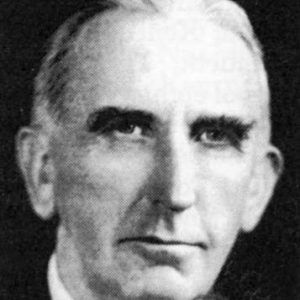 John Armstrong
John Armstrong 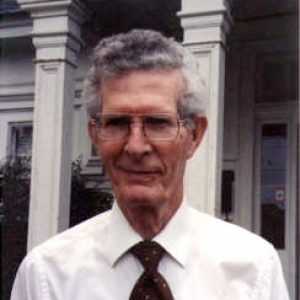 James David Bales
James David Bales 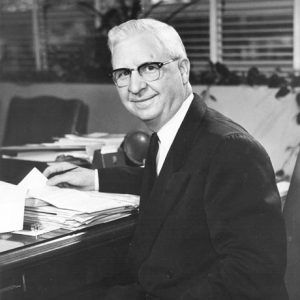 George Stuart Benson
George Stuart Benson 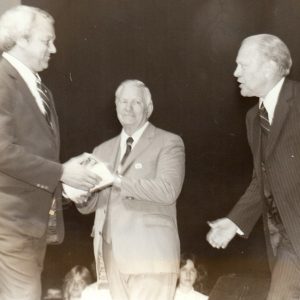 Ford Visit
Ford Visit 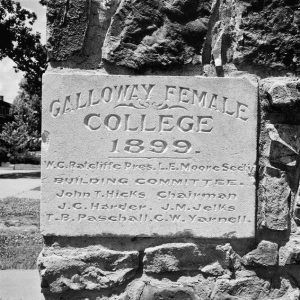 Galloway Female College Marker
Galloway Female College Marker 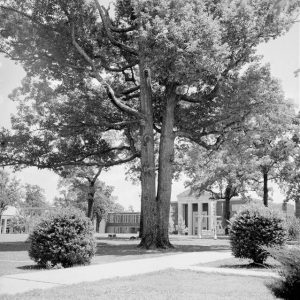 Harding University
Harding University 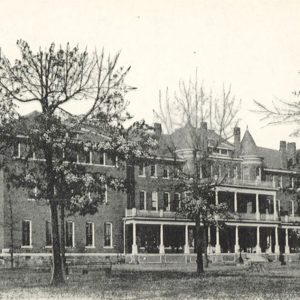 Harding University
Harding University 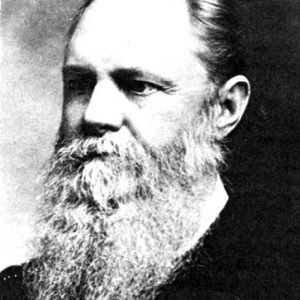 James Harding
James Harding 



Comments
No comments on this entry yet.